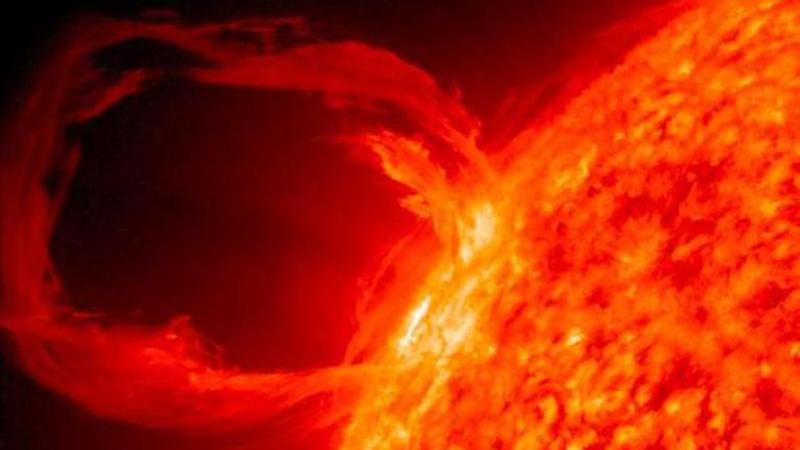Published 11:58 IST, July 11th 2021
'High speed' solar storm biggest in 4 years to hit Earth; may disrupt GPS, hit satellites
The solar storm can cripple power grids, jam satellite communication, cause dangerous levels of radiation, impacting passengers and crew in high flying aircraft

An intense and powerful solar radiation storm from the biggest solar flares in 4 years is travelling at an estimated speed of 1.6 million kilometers per hour and is expected to hit the Earth on Sunday, July 11 or on Monday, July 12, Space Weather forecasters have predicted.
A "high-speed" stream of highly charged particles has been launched in the direction of the Earth from a gaping hole in the Sun’s atmosphere. It may trigger a minor ‘solar storm’ in the Earth's magnetosphere, the region that shields the planet from lower-energy charged particles and protects the Earth's magnetic field. Once they enter the magnetosphere, the particles might perhaps be guided further into the magnetic field lines and penetrate into the Earth’s atmosphere near the north and the south poles, as scientists describe.
Impact caused by solar storm
As the highly charged particles from the solar atmosphere with high velocities get accelerated to large fractions of the speed of light towards the Earth, there are several significant impacts likely to be caused. “When energetic protons collide with satellites or humans in space, they can penetrate deep into the object that they collide with and cause damage to electronic circuits or biological DNA,” explained Space Weather Prediction center in a release on Saturday, July 10.
[A coronal mass ejection. Credit: NASA]
An expected S1 (Minor Radiation Storm) aftermath or a much higher event such as collision with a critical satellite is expected. Passengers and crew in high flying aircraft at high latitudes may be exposed to radiation risk. The solar storm can cripple power grids, jam satellite communication and cause dangerous levels of radiation. As the charged flares strike, they may create a layer of ionosphere capable of absorbing High Frequency (HF) radio waves that can disrupt the radio communication, other high-frequency communication, and, on rare occasions the global positioning systems (GPS).
"It is still remarkable to me the number of people, companies, who think space weather is Hollywood fiction," Caitlin Durkovich, a special assistant to US President Joe Biden and senior director of resilience and response in the National Security Council, said during a talk at a solar-weather conference last month as she warned about the impact of solar flares.
“The danger isn't hypothetical,” she continued, adding that in 2017, a solar storm caused ham radios to turn to static just as the Category 5 Hurricane Irma was ripping through the Caribbean and knocked global positioning systems in 2017 that can be detrimental if self-driving cars with GPS [like that Tesla plans] becomes a reality. Meanwhile, Airline pilots are at greater risk, she added.
[Powerful flare on 4 November 2003. Credit: NASA]
What causes 'solar storms'?
Every 11 years, the sun goes through a solar cycle that fluctuates the activity of the solar flares radiations. In December 2019, the sun observed its 25th cycle with solar minimum or when the activity was less intense with fewer sunspots. However, the sun’s solar flares are expected to reach their maximum in July 2025. Scientists may observe the activity of the sun during April 2024, when a total solar eclipse occurs. Solar flare eruption activity was witnessed last Saturday on July 3 where researchers roughly observed approximately 1,500 flares headed towards the Earth with energy equivalent of millions of 100-megaton hydrogen bombs exploding at the same time, Bill Murtagh, program coordinator at the US Space Weather Prediction Center told CNN.
Sun’s flares are measured by the scientists as A-class flares categorized as the smallest and X-class flares being the largest. The flares that are expected to cause a solar storm on July 11 or 12 are the largest category of solar flares categorized as X1(R3 - Strong Radio Blackout) that occurred last week at 14:29 UTC. A massive energy release accompanied by coronal mass ejections, or the magnetic plasma bubbles will be felt at 93 million miles away from Earth’s atmosphere, Murtagh said. The coronal mass ejection may also leave the sunspots that may take weeks or months to diminish.
Updated 11:55 IST, July 11th 2021





